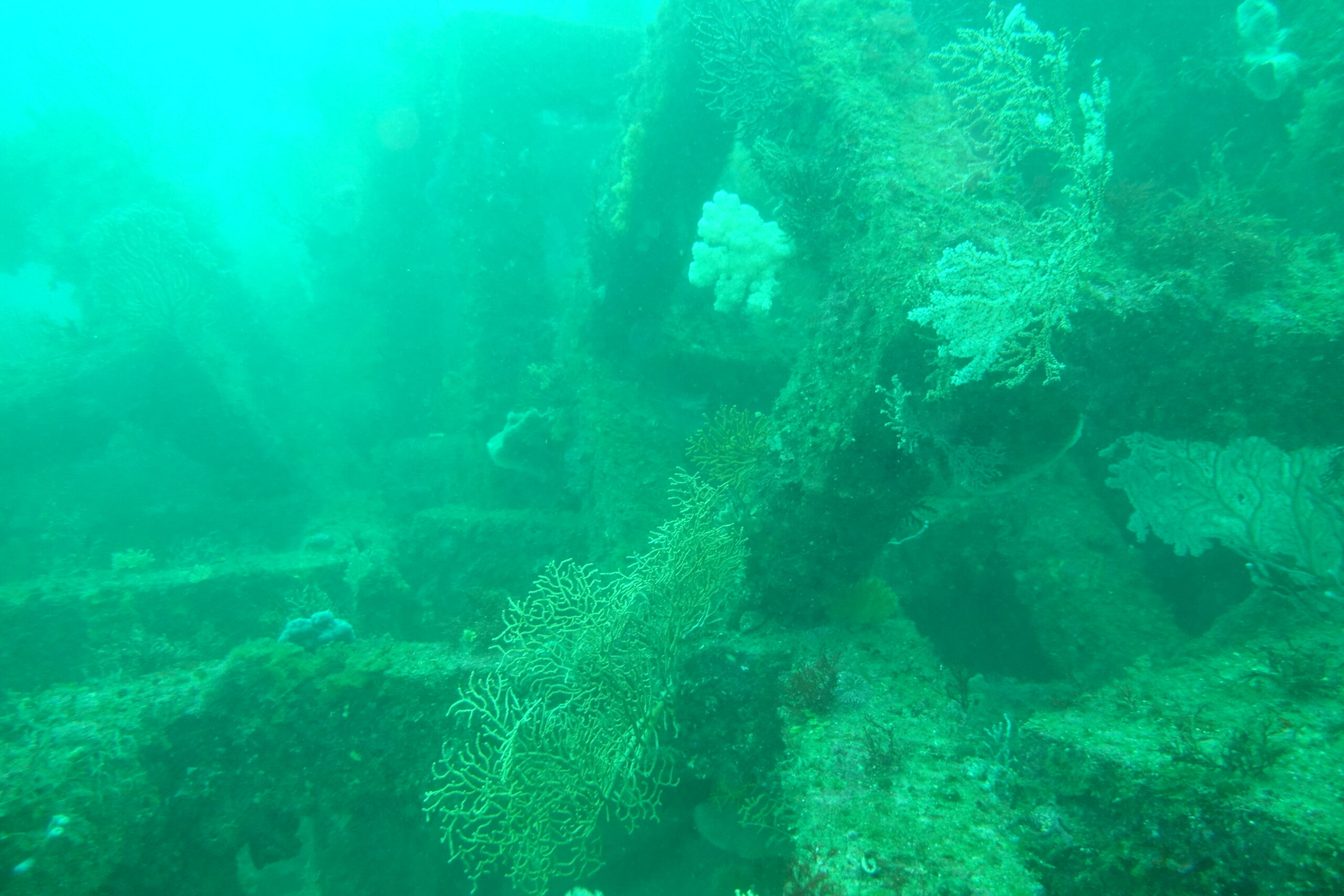Carbon capture is a hot topic in green energy currently. Some see the technology to remove carbon emission from the air as essential to slowing global warming (although not everyone is convinced). The Biden administration recently committed more than $1 billion dollars for carbon capture projects, including one in Texas.
There are natural ways to capture carbon, too: Trees are good carbon sinks. The ocean’s ecosystems may also capture carbon.
Richard Kline, a professor of marine science at the University of Texas Rio Grande Valley, is studying just how much. He spoke to the Texas Standard about his research at an artificial reef off the coast of South Texas.
This transcript has been edited lightly for clarity:
Texas Standard: Are you actually building a reef, or are you studying a reef that’s already in existence?
Richard Kline: Well, I work closely with the Friends of the Rio Grande Valley Reef who actually facilitated building this reef. Now we’re studying what’s in place. This reef has been building since about 2016 … And so now all this material is there and we’re studying what’s happening.
So tell us a little bit more about how your research is going to proceed here and what it is that you’re looking for.
Well, there are three areas where we might find carbon collecting on these reefs. One is in the bodies of fish. We surveyed this area before there was any reef material down and there were very, very few fish, only mud-associated fish and a very small population. Now we’ve got thousands and thousands of tons of concrete material on the seafloor and huge populations of fish. So we’re studying and trying to count every one of those fish to see how much carbon is in their bodies.
Also the encrusting organisms – the barnacles, the sponges, the sea fans, whip corals – all these things also pull carbon out of the water and store it in their bodies. So we’re looking at that, too.
One final area is, of course, the sediments around these reefs where most of that carbon will end up going and being sequestered.
Is it your hypothesis that this could be a real part of the solution to removing carbon from the atmosphere? Or is this sort of more incremental as you see it?
Well, at this point, it’s incremental. I mean, we have a lot of seafloor that could have artificial reefs along the coast of the United States. And no one’s really looked at this particular question yet.
And so we’re wondering, you know, how much carbon could be down there. I mean, they found tremendous amounts of carbon in seagrass beds, even oyster reefs and things like that.
And this is a little further offshore, a lot more area, real estate to be had. So we think over the long term, this may be one other solution.
» GET MORE NEWS FROM AROUND THE STATE: Sign up for Texas Standard’s weekly newsletters
So in other words, if you really wanted to get serious about this, assuming that you find what you think you may well find here, you could have a whole string of reefs up and down both coasts in the Gulf of Mexico. Would that be the idea?
Yes, that would be the idea: to put more and more reefs out, if it was found that substantial amount of carbon can be held in them. And there’s no reason to doubt that that can’t be the case.
Well, I was just going to ask, what does the science have to say about this? I mean, the fish are going to be there with or without the reefs, right?
Well, that’s not necessarily true. These are reef-associated fish; they are associated with hard structure. And in the Gulf of Mexico, at least on the Texas side, we have mainly sand and mud. And so putting more hard structure out there gives you populations of fish fairly quickly.
And also all these encrusting organisms. That’s what’s happening on these reefs as well. All these things are settling down, filtering all of this sun-dried food out of the water column and storing carbon.
How you go about measuring this, and who all is working on it?
Well, I’ve got three graduate students and myself working on this project. We go about doing this by taking the organisms off the reef and actually measuring their actual blue carbon content, which is the inorganic carbon that’s stored in their bodies.
We do this in the laboratory, and then we actually are going to extrapolate from that from video surveys to quantify the amount of carbon held in the entire reefs.
But I wonder how many reefs you’d have to have, what size reefs they’d have to be, if you were going to really make a dent on climate change.
Well, we’ve got the largest artificial reef placement on the Texas coast right now. It’s 2 1/2 square miles, and it’s got thousands of pieces of material in it that have been placed over the years. And so we’re studying this one to see what the scale might have to be.
What’s your sense of it, knowing the science?
Well, I think to combat all of the fossil fuels that we’ve been burning and things like that, we’re going to need an awful lot of help in multiple directions to try to get this somewhat under control. I think, as you said, it’s going to be incremental. We’re going to have to have many players in many different areas in order to get back to even carbon neutral.
You know, I’ve heard critics of carbon capture saying that the efforts and the money being spent is basically a license for polluters to continue to spew out carbon and make things worse in the interim. What would you say to them?
I don’t really think that’s true at all. I think you have to have a multifaceted approach. And for these reefs, I mean, there are many, many other benefits for making artificial reefs other than just carbon capture. This is just one other benefit that we may have from it. I mean, we have thousands of fishermen every year going out there, enjoying themselves on these reefs – scuba divers as well.













